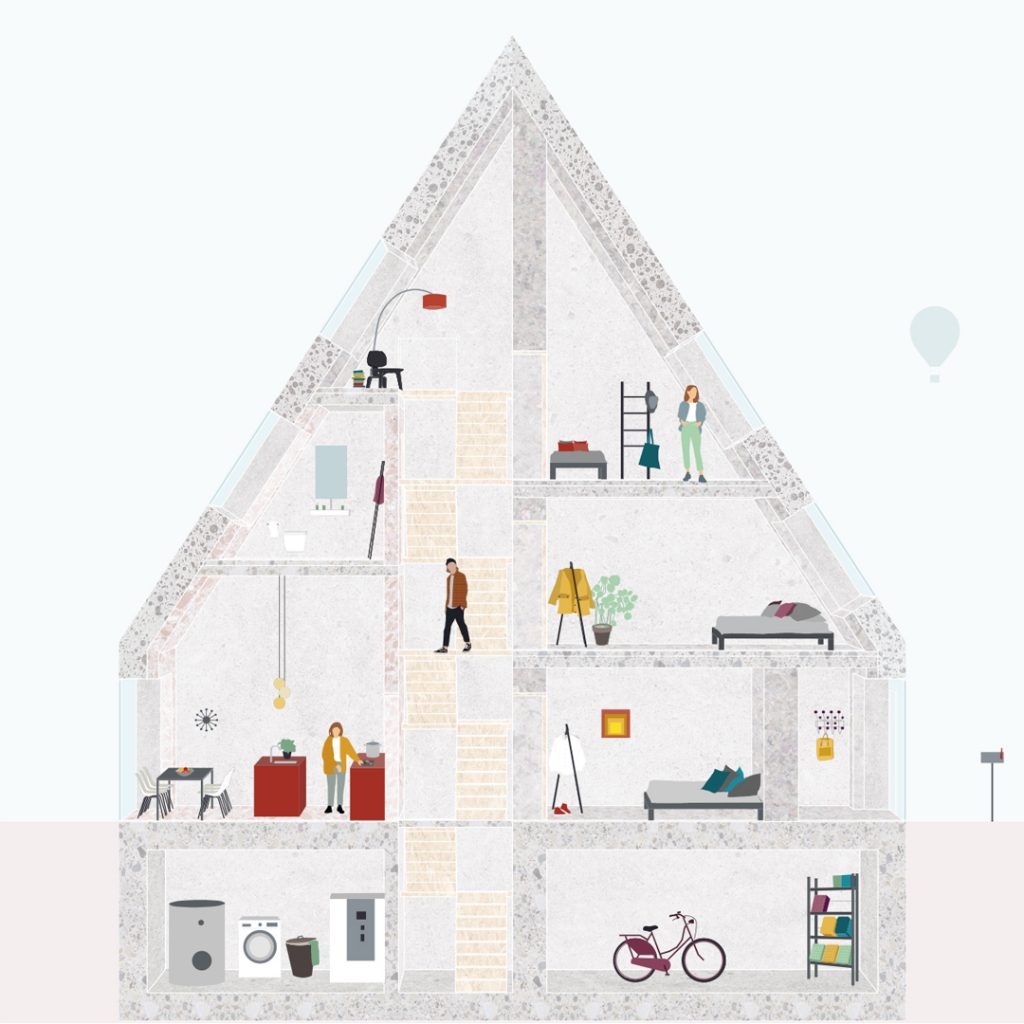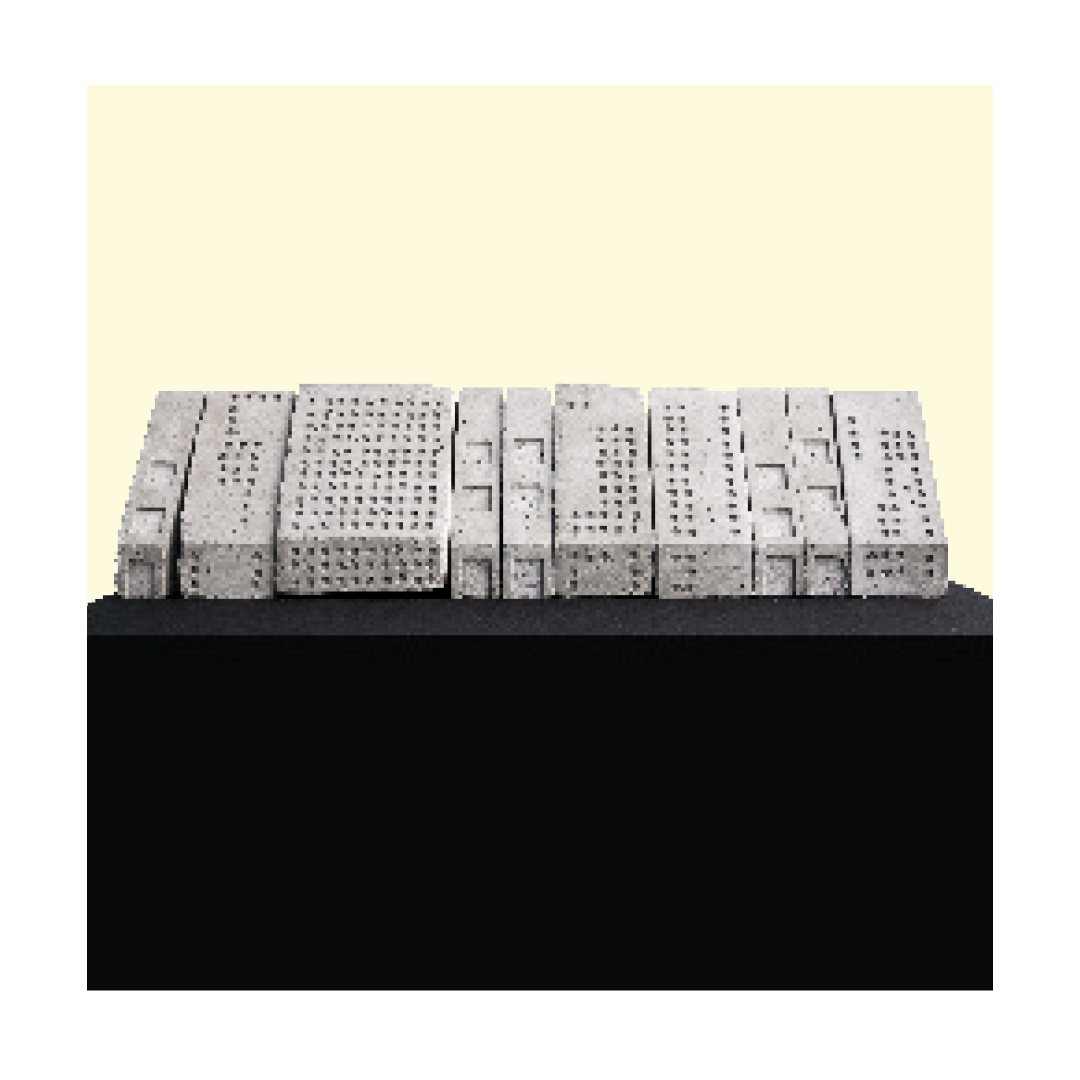„Textile is the second biggest pollutant after oil.“
This is what Dezeen wrote about the project by fashion designer Eileen Fisher at Milan Design Week in April 2018 on Instagram. A gate formed from lattice boxes felt with recycled clothes from the fashion company.
This contribution as well as the ever-present topic of the German throwaway society is an impetus for dealing with the topic of future-oriented environmental awareness in architecture. Recycling materials towards a new aesthetic in building.
An experimental house is designed from a strong material approach. This borrows roof house typologies, crosses them and creates a new type of roof house.


[01] The starting typologies for this are on the one hand a single-family house – here a Stuttgart single-family house from 1950 with 140 square meters – and a prefabricated church from the 1970s, which was built over 20 times in the diocese of Rottenburg-Stuttgart.
[02] The initial typologies are reduced to their basic volume. Whereupon the church is scaled to the reference volume of the single-family house on the basis of various regulations. The resulting volume consists of two parts, which are composed of a ‚stacked‘ and an ‚empty‘ room.
[03] In detail, the newly created type of living will be equipped with recycled materials. These archive a new aesthetic by being re-used or unconventionally used.
The experimental house is created by combining the emerging roof house type and material approach.
The experimental house is made up of: [04] The specific room volume, which adapts the cellular structure of the single-family house, and [05] the unspecific room volume, which is based on that of the church. These room volumes are connected or separated by a communicative partition wall with various openings such as a flap door, curtain or folding door.


